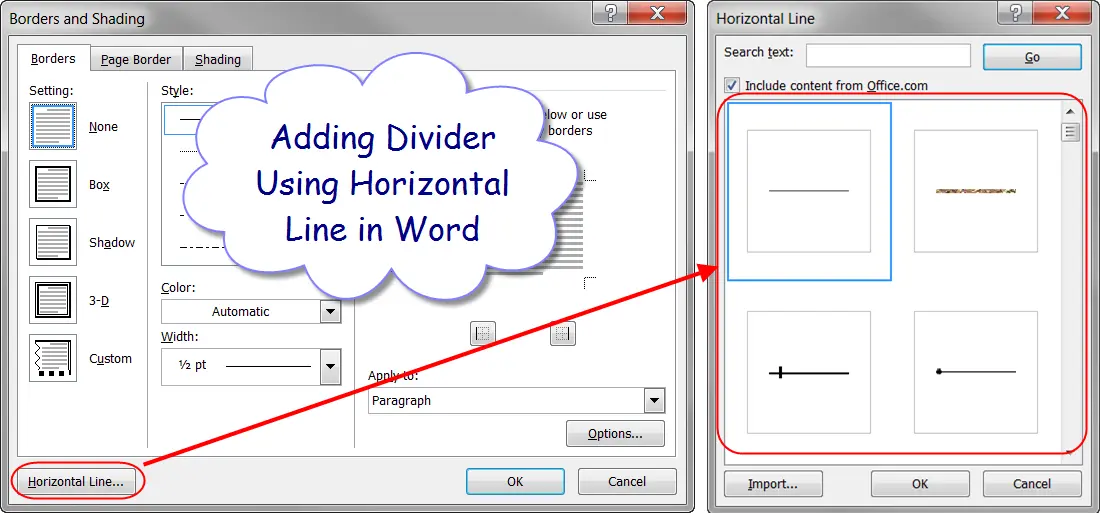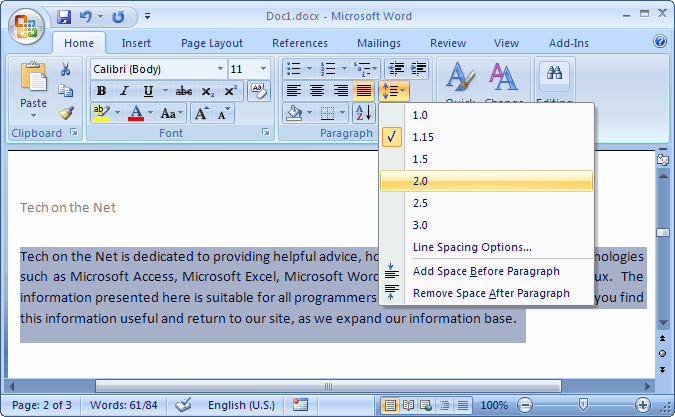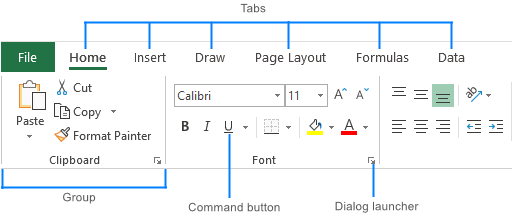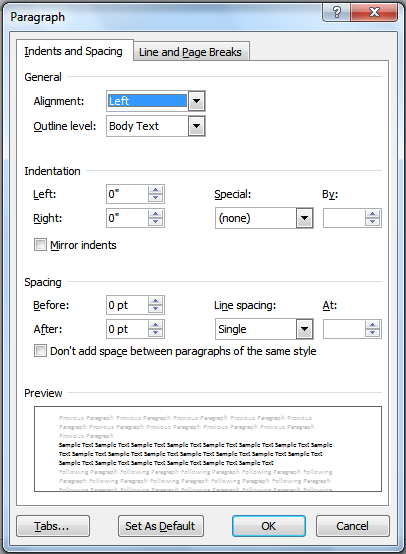How To Put Editing Group Under Home Tab In Word For Mac
On the “ Customize Ribbon ” screen, the tabs available to add to the ribbon are listed in the right pane. To add a custom tab, click the “ New Tab ” button at the bottom of the list. A “ New Tab ” is added to the list. To change the name of the tab, right-click on the “ New Tab “, and select “ Rename ” from the pop-up menu. Jan 08, 2016 Steps. Open Microsoft Word. On your desktop, double-click the Microsoft Word icon to launch the application. Make the ruler visible. By default, the ruler at the top of the document should already be visible. In the case that it is not, click the View option at the very top of the screen, and a window will drop-down.
- Home Blake Shelton Tab
- How To Put Editing Group Under Home Tab In Word For Mac Free
- How To Put Editing Group Under Home Tab In Word For Mac Os
- How To Put Editing Group Under Home Tab In Word For Macbook
- Home Tab Daughtry
- How To Put Editing Group Under Home Tab In Word For Mac Download
Choose the Home tab, then click the small arrow in the bottom right corner of the group called Styles. From the drop-down menu, click the New Styles button (bottom left). However, Word isn’t locked to the Protected View format. Switching from Protected View to editing mode takes only a few clicks. You’ll notice a yellow Message Bar. Click “Enable Editing” as you’d see on the Message Bar. Next, click File and then Edit Anyway. Finding Text in a Word Doc. To search for text in Word, you’ll need to access the “Navigation” pane. You can do so by selecting “Find” in the “Editing” group of the “Home” tab. An alternative method to accessing this pane is by using the Ctrl + F shortcut key on Windows or Command + F on Mac.
In this article, we will learn What is Home Tab in Microsoft Excel & It's Uses.
Home Tab
Home tab is the default tab in Microsoft Word, Microsoft Excel, Microsoft PowerPoint, and other Microsoft Office products. The Microsoft Word Home tab provides many features to users, including the following.
- Change font type, size, and color.
- Set text to be bold or underlined.
- Add or remove highlighting color around text.
- Justify text on the page to be left, center, or right aligned.
- Add bullet points or numbered lists.
- Increase or decrease line and paragraph spacing.
- Increase or decrease text indentation.
- Add, change, or remove borders around text, text boxes, and tables.
- Add or modify heading types.
- Insert a horizontal line.
- Find or replace text.
Clipboard
You can display the Clipboard Task Pane by clicking on the dialog launcher in the bottom right corner of this group.
Paste - Button with Drop-Down. The button will paste the current contents from the clipboard. The drop-down contains the commands: Paste, Formulas (removed in 2010), Paste Values, No Borders, Transpose, Paste Link, Refreshable Web Query, Use Text Import Wizard, Paste Special and Paste as Hyperlink. The As Picture extension includes: Copy as Picture, Paste as Picture and Paste Picture Link. Exactly which commands are enabled will depend on the type of object that has been copied.
Cut - (Ctrl + X). Cuts the current selection to the clipboard.

Copy - Button with Drop-Down. (Ctrl + C). Copies the current selection to the clipboard. The drop-down contains the command Copy as Picture.
Format Painter - Copies the format from a cell (or range) allowing it to be pasted elsewhere.
Font
You can display the 'Format Cells' dialog box, Font tab, by clicking on the dialog box launcher in the bottom right corner of this group.
Font - Drop-Down. Provides a list of all the available fonts (based on your current printer selection).
Font Size - Drop-Down. Lets you adjust the character size (based on your current printer selection).
Increase Font Size - Increases the font size of the current selection to the next larger size in the Font Size box.
Decrease Font Size - Decreases the font size of the current selection to the next smaller size in the Font Size box.
Home Blake Shelton Tab
Bold - (Ctrl + B). Toggles bold on the current selection.
Italic - (Ctrl + I). Toggles italics on the current selection.
Underline - (Ctrl + U). Button with Drop-Down. The button toggles bold on the current selection. The drop-down contains the commands: Underline and Double Underline.
Borders - Button with Drop-Down. The button applies a border to the current selection. The drop-down contains the commands: Bottom, Top, Left, Right, No, All, Outside, Thick Box, Bottom Double, Thick Bottom, Top and Bottom, Top and Thick Bottom, Top and Double Bottom, Draw Border, Draw Border Grid, Erase Border, Line Color, Line Style and More Borders.
Fill Color - Button with Drop-Down. The button applies a colour to the background of the current selection. The drop-down contains the commands: Theme Colors, Standard Colors, No Fill and More Colors.
Font Color - Button with Drop-Down. The button changes the colour of the font of the current selection. The drop-down contains the commands: Automatic, Theme Colors, Standard Colors and More Colors.
Alignment
You can display the 'Format Cells' dialog box, Alignment tab, by clicking on the dialog box launcher in the bottom right corner of this group.
Top Align - Align text to the top of the cell.
Middle Align - Align text to the center of the cell.
Bottom Align - Align text to the bottom of the cell.
Orientation - Drop-Down. Rotates the current selection to a diagonal angle or a vertical angle. The drop-down contains the commands: Angle Counterclockwise, Angle Clockwise, Vertical Text, Rotate Text Up, Rotate Text Down and Format Cell Alignment.
Wrap Text - Wraps the text so it is displayed on multiple lines.
Align Left - Aligns data to the left edge of the cell.
Center - Aligns data to the middle of the cell.

Align Right - Aligns data to the right edge of the cell.
Decrease Indent - (Ctrl + Alt + Shift + Tab). Decreases the indent by 1 or removes the indent completely.
Increase Indent - (Ctrl + Alt + Tab). Increases the indent by 1.
Merge & Center - Button with Drop-Down. The button joins the selected cells and centres the contents in the new cell. The drop-down contains the commands: Merge & Center, Merge Across, Merge Cells and Unmerge Cells. The Merge Across will only merge the cells in the same row. The Merge Cells are the same as Merge and Center but with no change to the alignment.
Number
You can display the 'Format Cells' dialog box, Number tab, by clicking on the dialog box launcher in the bottom right corner of this group.
Number Format - Provides a list of all the available number formats. The built-in number formats are: General, Number, Currency, Accounting, Short Date, Long Date, Time, Percentage, Fraction, Scientific and Text.
Accounting Number Format - Button with Drop-Down. The button applies your 'default' accounting number format to the current selection. The drop-down contains the commands: English (UK), English (US), Euro and More Accounting Formats.
Percent Style - (Ctrl + Shift + %). Applies the percent number format to the current selection.
Comma Style - Applies the comma style number format to the current selection.
Increase Decimal - Adds one decimal place to the current selection.
Decrease Decimal - Removes one decimal place from the current selection.
Styles
Conditional Formatting - Drop-Down. Provides access to conditional formatting commands which can be used to apply cell formatting automatically. The drop-down contains the commands: Highlight Cells Rules, Top/Bottom Rules, Data Bars, Color Scales, Icon Sets, New Rule, Clear Rules and Manage Rules.
Format as Table - Drop-Down. This applies a Table Style to the current selection and defines it as a table. The drop-down contains the commands: Light, Medium, Dark, New Table Style and New PivotTable Style. The New Table Style displays the 'New Table Style' dialog box. The New PivotTableStyle displays the 'New PivotTable Style' dialog box.
Cell Styles - Drop-Down. This applies a cell style to the current selection. The drop-down contains the commands: Custom, Good Bad and Neutral, Data and Model, Titles and Headings, Themed Cell Styles, Number Format, New Cell Style and Merge Styles. The New Cell Style displays the 'Style' dialog box.
Cells
Insert - Button with Drop-Down. The button always inserts cells into the current selection, shifting cells down. The drop-down contains the commands: Insert Cells, Insert Sheet Rows and Insert Sheet Columns, Insert Sheet.
Delete - Button with Drop-Down. The button always deletes the current selection shifting cells up. The drop-down contains the commands: Delete Cells, Delete Sheet Rows, Delete Sheet Columns and Delete Sheet.
Format - Drop-Down. Provides an assortment of useful commands that apply to rows, columns and sheets. The drop-down contains the commands: Row Height, AutoFit Row Height, Column Width, AutoFit Column Width, Default Width, Hide & Unhide, Rename Sheet, Move or Copy Sheet, Tab Color, Protect Sheet, Lock Cell and Format Cells. The Hide & Unhide extension contains the commands: Hide Rows, Hide Columns, Hide Sheet, Unhide Rows, Unhide Columns and Unhide Sheet.
How To Put Editing Group Under Home Tab In Word For Mac Free
Editing
AutoSum - Button with Drop-Down. Exactly the same command can be found on the Formulas Tab.
Fill - Drop-Down. Lets you fill the selection in any direction and into any range of adjacent cells. The drop-down contains the commands: Down, Right, Up, Left, Across Worksheets, Series, Justify and Flash Fill (Added in 2013).
Clear - Drop-Down. Remove everything from the current selection or remove particular items by expanding the drop-down. The drop-down contains the commands: Clear All, Clear Formats, Clear Contents, Clear Comments, Clear Hyperlinks (Added in 2010) and Remove Hyperlinks (Added in 2010).
Sort & Filter - Drop-Down. Sorts the currently selected data or current region into ascending or descending order and lets you add filters to reduce the number of visible rows. The drop-down contains the commands: Sort A to Z, Sort Z to A, Custom Sort, Filter, Clear and Reapply.
Find & Select - Drop-Down. The drop-down contains the commands: Find, Replace, GoTo, GoTo Special, Formulas, Comments, Conditional Formatting, Constants, Data Validation, Select Objects and Selection Pane.
How To Put Editing Group Under Home Tab In Word For Mac Os
Ideas
Ideas - (Added in 2019). Displays the Ideas Task Pane to give you insightful analysis about your data.
Sensitivity
Sensitivity - (Added in 365). Drop-Down. This applies a sensitivity label to the active workbook. The drop-down contains the commands: Non-Business, Public, General, Confidential and Highly Confidential. This replaces the previous AIP (Azure Information Protection).

Hope this article about What is Home Tab in Microsoft Excel & Its use is explanatory. Find more articles on calculating values and related Excel formulas here. If you liked our blogs, share them with your friends on Facebook. And also you can follow us on Twitter and Facebook. We would love to hear from you, do let us know how we can improve, complement or innovate our work and make it better for you. Write to us at info@exceltip.com.
How To Put Editing Group Under Home Tab In Word For Macbook
Useful Articles :
10+ Creative Advanced Excel Charts to Rock Your Dashboard : These creative charts can make you stand apart from the crowd. These charts can be used for different types of reports. Your dashboard will be more expressive than ever.
How to Save and Use an Excel Chart Template : It is important to save chart templates for repetitive charts to save time and energy. To save chart templates in excel follow these steps.
Best Charts in Excel and How To Use Them : These are some of the best charts that Excel provides. You should know how to use these charts and how they are interpreted. The line, column and pie chart are some common and but effective charts that have been used since the inception of the charts in excel. But Excel has more charts to explore.
Excel Sparklines : The Tiny Charts in Cell : These small charts reside in the cells of Excel. They are new to excel and not much explored. There are three types of Excel Sparkline charts in Excel. These 3 have sub categories, let's explore them.
Change Chart Data as Per Selected Cell : To change data as we select different cells we use worksheet events of Excel VBA. We change the data source of the chart as we change the selection or the cell. Here's how you do it.
Popular Articles :
50 Excel Shortcuts to Increase Your Productivity : Get faster at your tasks in Excel. These shortcuts will help you increase your work efficiency in Excel.
How to use the VLOOKUP Function in Excel : This is one of the most used and popular functions of excel that is used to lookup a value from different ranges and sheets.
How to use the IF Function in Excel : The IF statement in Excel checks the condition and returns a specific value if the condition is TRUE or returns another specific value if FALSE.
Home Tab Daughtry

How To Put Editing Group Under Home Tab In Word For Mac Download
How to use the SUMIF Function in Excel : This is another dashboard essential function. This helps you sum up values on specific conditions.
How to use the COUNTIF Function in Excel : Count values with conditions using this amazing function. You don't need to filter your data to count specific values. Countif function is essential to prepare your dashboard.